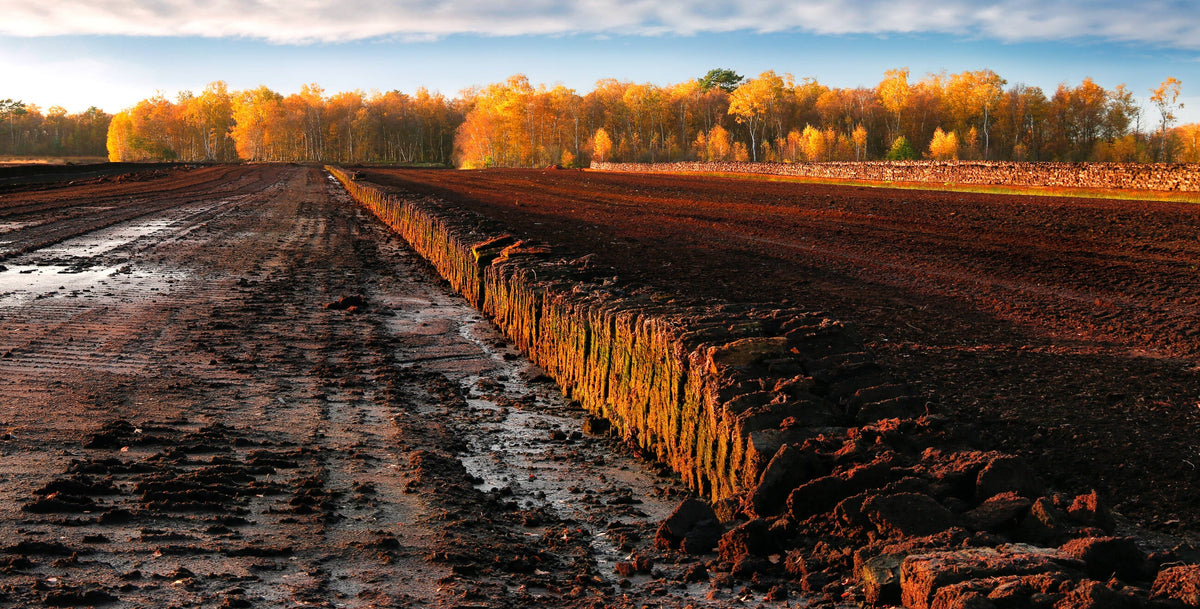
Peated Whisky: You Either Love it or Hate it
|
|
Time to read 3 min

|
|
Time to read 3 min
Peated Whisky! It’s probably the most polarizing flavor in the Whisky world. It takes time to appreciate, but those who swear by it, can’t imagine their sipping pleasures without the peat. So give peated Whisky time and read on.
But first things first:
Rubbish, really. Peat is thousands of years’ worth of decaying vegetation, animals and moss which have evolved into layers; a bog if you will. Peat’s substance varies; some bogs are woodier, whilst other peat is more watery. A peat bog grows by 1mm every year, so just a metre thick bog is 1000 years old.
When peat is harvested, it’s cut up into small sloppy slices of ‘sod’, stacked in pyramids, and left to dry. Before you know it, well, 2-3 weeks later, you have yourself some tough peat bricks, which contain more energy than coal. Peat fires are an ancient Scottish tradition; the stuff is so compact that it burns piping hot for ages.
As the name suggests, you need peat to make peated Whisky, the gorgeously smoky dram that people either love or hate.
Peat and smoke, while similar, are not the same and are not present together in all Whiskies.
Peat is a fossil fuel-like soil made up of decaying plants and animals compressed in wet, bogland areas. It burns incredibly well and, as such is used to dry grains. That's why peat is present in some Whiskies alongside a smokiness from the burning process. Since it comes from the ground and is very soil-like, it imparts earthy, dew-covered grassy tones.
Smoke, on the other hand, is exactly like the smoke you get from a bonfire. It is thick and ashy with a slightly drying quality. Learn more about smoky Whisky here.
Many people think it's the water, running through peat bogs that gives Whisky its peated taste. But the substance is in the smoke.
Barley grain, or damp malt, is exposed to the smoke of a peat fire in order to arrest germination, a crucial part of Whisky production. Peat smoke produces chemicals called phenols, and these are absorbed by malted barley. The amount of time the barley grain’ exposed to the peat smoke determines the level of phenols, and therefore the Spirit’s flavor. For an idea, damp malt is usually dried for about 30 hours. Laphroaig dries its malt over a peat fire for between 12 to 18 hours.
Once dried, the malt is mashed, and the “peatiness” is measured by PPM or Phenol Parts Per Million. Some phenol is lost in distillation so the final PPM of the Spirit is roughly one-third of the original figure. Distilleries still use the PPM of the malt. For example, Ardbeg clocks at around 54ppm, Bowmore at 22ppm, and Bunnahabhain are a mere 1 - 2ppm.
Peat varies by region and can add various flavors from a soapy, sulphuric, medicinal, rich, smoky, herbal, creamy, saline, nutty, citrus, mossy, bonfire, burning tires, diesel, or even bacon, depending on the amount of time the malt is peated for, the PPM, and the length of time Whisky is left to mature.
Peat is not for everyone, granted. But when you want to try a peated dram, look for these.
The peat flavor in varying degrees is considered essential in Scotch Whisky, particularly those produced in Islay, such as Laphroaig, Lagavulin and Ardbeg, Bowmore, Port Charlotte, and Caol Ila.
In other parts of Scotland, peated Whiskies can be found as well: Springbank, Benromach, Ardmore, Highland Park, Talisker, Ledaig, and Longrow, to name just a few.
Looking for peated Whisky outside Scotland, India’s Peated Amrut is an emerging classic; Japan is also big on the peat, particularly at the Yoichi distillery, Swiss Whisky Saentis is an absolute hit, while in New Zealand, the Manuka Smoke single malt has recently been introduced.
Like your Irish? Try the very peated Connemara Peated Single Malt, a lovely liquid.
Check our list of best-peated Whiskies for spring here.
If you like your curry extra spicy and your espresso double, you might want to go all-in on the peat. You are also probably starting to wonder right now.
There’s no official peated Whisky ranking, but there's no doubt that the most peated Whisky in the world is Bruichladdich’s Octomore 08.3 Masterclass, at a whopping 309.1PPM, our fellow peat-eaters!
Go ahead, be our guest, just beware; this Whisky was born from a dare and your first sip of it will feel like you are biting into a clump of peat. Future releases of the Octomore will undoubtedly build on this extreme peating, but only time will tell when they reach the upper limit.
So what do you say – peated Whisky yea or nay?
Lastly, find amazing peaty (or not) Spirits in our selection of best Scotch Whiskies under $50!



